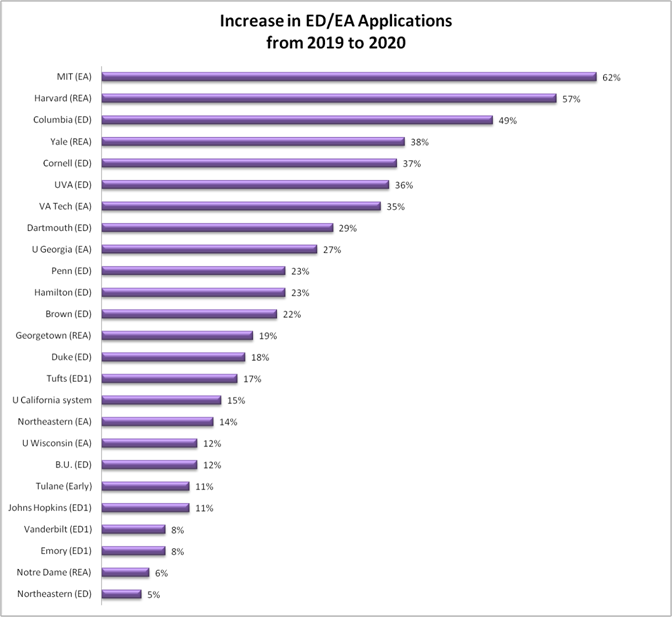Students Admitted Early Decision as a Percentage of Enrolled Freshmen
In 2022, Education Reform Now released the first brief in their Future of Fair Admissions series. The brief contained the most comprehensive research on college admissions early decision plans, which provide an applicant an admissions decision in mid-December in exchange for the student’s commitment to enroll if admitted.
The chart linked below from ERN shows the 84 IHEs where a third or more of freshmen were enrolled through early decision (ED) programs in 2022 plus 6 more that enrolled more than a third of their freshmen ED in 2020 but did not share data for 2022. The Common Data Set does not publish the number of students who are enrolled through early decision. Since early decision is binding, you would expect a very high share of all students admitted ED to enroll. Blank spaces represent years when data were not available. 0% represents years an IHE did not offer ED.








